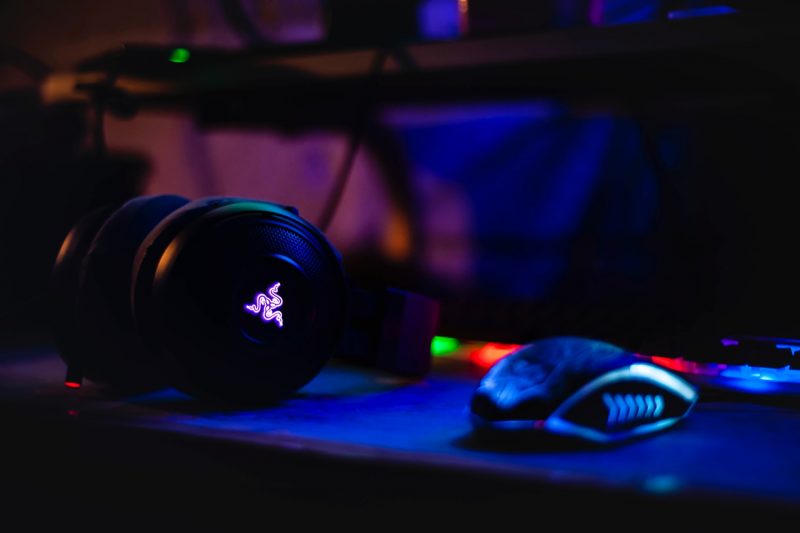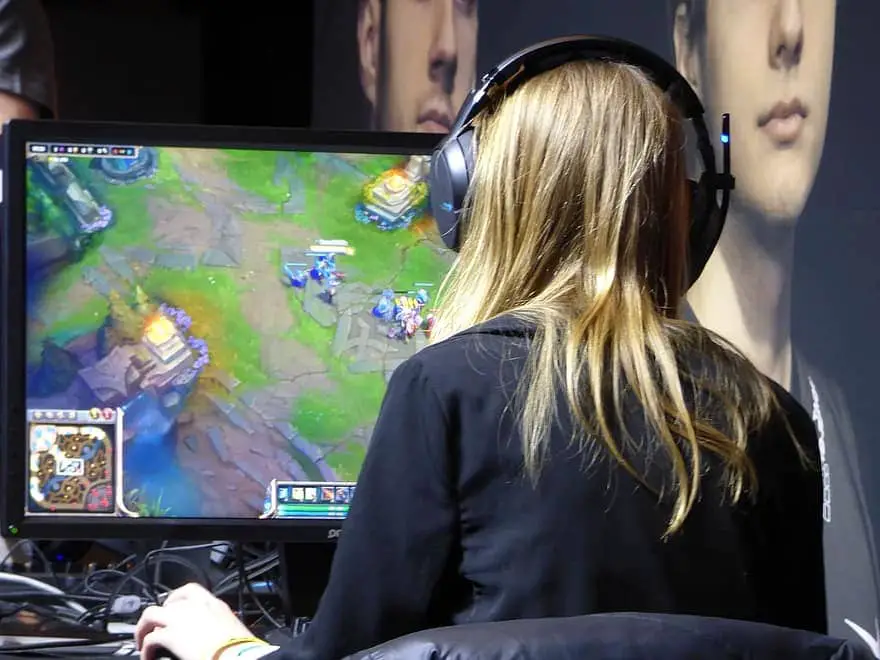
With its initial release in 2016, Overwatch became an instant hit with players. Its roster of likable characters and fun gameplay mechanics made it a global obsession, especially among young gamers.
Today, Overwatch doesn't have the same amount of hype surrounding it but it’s still a popular game nevertheless. Around 15-20K people still watch Overwatch streams on Twitch each month. This means that you'll have no trouble finding matches if you're thinking of getting into it.
While Overwatch doesn’t demand the latest and greatest PC hardware to run, you’ll need a capable CPU and a graphics card to play it without stutters. As we all know, stutters are a death sentence in the world of competitive gaming!
So what’s the best graphics card for Overwatch?
That’s exactly what I’m going to be addressing in this blog post, so keep reading to find out!
Contents
The below-listed graphics cards meet the minimum Overwatch video card requirement and a few even surpass the recommended requirements. However, the actual performance will vary depending on what CPU you’re running.
The Specs:
About the NVIDIA GeForce GTX 1660 Chip:
While the GTX 1660 Super is technically a 'budget' card it's still more than capable of delivering great performances. With a boost clock of 1830 MHz, it can keep Overwatch running at around 235 frames per second on the 'High' setting. I did notice that the frame rate dipped during larger fights but this is easily taken care of by switching to a lower resolution setting.
The GTX 1660 Super comes with 6GB of GDDR6 RAM, which is around twice as fast GDDR5. Combine this with the GPU's 88 Texture Mapping Units and it’s pretty much guaranteed that all the graphics in Overwatch are rendered extremely fast.
Finally, this graphics card comes with NVIDIA's Ansel software that allows you to capture in-game screenshots and share them. It even allows you to create 360-degree shots.
Pros:
Cons:
The Specs:
About the GeForce RTX 2060 Chip:
The RTX 2060 has a slightly slower boost clock than the GTX 1660 but it still manages to produce a higher FPS. This is because, first of all, it’s got 8GB in V-RAM which means that it can load up more objects and textures at once. Secondly, it’s also got more Shading Units and TMUs which means that it’s less of a struggle to render graphics on the screen.
In High settings, this graphics card was able to keep the FPS above 315 most of the time. While large firefights did cause some significant dipping, I didn’t feel the need to switch to a lower setting.
Something I love about this Gigabyte VGA is the Windforce 2X cooling system. It features two 100mm fans which spin in alternate directions, leading to more efficient heat dissipation.
Pros:
Cons:
The Specs:
About the Radeon RX 580 Chip:
The Sapphire Radeon Pulse RX 580 offers a lot for its price point. For instance, it offers 8GB of V-RAM, but keep in mind that it's GDDR5 and not 6 which means that it won’t be as fast the RTX 2060. Furthermore, it has a decent boost clock speed of 1366 MHz which caps off the frame rate at around the 120s on the High Settings.
If you don't want to experience stuttering during large matches, I recommend playing at Medium Settings instead.
This graphics card ships with Intelligent Fan Control III software which tries to keep the fans as quiet as possible. When you're doing light work, the fans don't spin at all and only start to back up when you load up a game or a heavy application.
Pros:
Cons:

Best GPU for Overwatch
The Specs:
About the NVIDIA RTX 2080Ti Chip:
In all honesty, an RTX 2080Ti is pretty overkill if you just want to play Overkill. However, if you want an extremely powerful graphics card and you don't mind the high price tag then go for it.
This graphics card has a boost of 1665 MHz which isn't out-of-this-world like you might expect from this price point. However, it leverages power differently, through the use of 'CUDA Cores'. CUDA is a programming language developed by NVIDIA that can create thousands of parallel processors. This means that tasks like rendering in-game scenery and drawing character models can be handled much faster by the GPU.
The RTX 2080Ti is nothing short of a beast, allowing you to run Overwatch on Ultra while still keeping the FPS at around 150 FPS. It's also got 11GB of V-RAM which means that you can play pretty much any Triple-A title that's out right now.
Lastly, this graphics card comes with GPU Tweak II technology which allows you to toggle between different performance modes or customize your own. These change up the GPU performance, making it easier to overclock when needed.
Pros:
Cons:
The Specs:
About the NVIDIA GeForce GTX 1650 Chip:
What if you just wanted a GPU that just fulfilled the minimum spec requirements for Overwatch? Then I'd recommend the Geforce GTX 1650. It's got 4GB of GDDR6 V-RAM which is what Blizzard lists as the minimum amount of V-RAM needed to play Overwatch.
So as you might guess, you're not going to the best performance for Overwatch out of this graphics card. Despite the impressive boost clock speed of 1740 MHz, the lack of V-RAM and the relatively low Shading Unit count holds it back. If you want to play Overwatch on this graphics card, then you're better off having your settings at Low for optimum performance. If you try to push it to Medium, you may experience some stutter.
This graphics card comes with MSI’s afterburner technology which makes overclocking much easier. It lets you access variables like clock frequency, voltage, and fan speed so that you can configure them to your liking.
The MSI GeForce GTX 1650 Super Ventus delivers exactly what you might expect from a graphics card in its price point. It’s hands down one of the best cheap graphics card for Overwatch that I’ve tried.
Pros:
Cons:
Specs
About the NVIDIA GeForce GTX 1070 Chip
The GTX 1070 is a well-performing GPU, especially when it comes to e-sports titles like Overwatch. It's got a Boost clock speed of 1708 MHz and when combined with the 8GB of V-RAM, you get an FPS that hovers around the 145 mark on High settings. When you've got a lot of players battling on-screen, you can expect this to take a dip but I didn't experience any stuttering whatsoever.
This GTX 1070 graphics card comes with a software called 'Freeze' which automated fan control based on the internal temperature. It automatically turns off the fans when the internal temperature is low enough. This helps increase the fans' lifespans since they're not turned on 100% of the time.
Pros:
Cons:
The Specs:
About the NVIDIA GeForce GTX 1050 Ti Chip:
The GTX 1050 Ti is another budget GPU that fulfills the minimum requirements for running Overwatch. It offers 4GB of GDDR5 V-RAM and its boost clock speed stands at a decent 1392 MHz. In short, with the GTC 1050, Ti Overwatch can be played in Low settings without any noticeable stuttering.
Like the more powerful RTX 2080Ti, it comes with the GPU Tweak II software which gives you an easy-to-use visual interface for overclocking. However, considering that this graphics card only comes with a single fan, I wouldn't overclock it for very long periods, unless of course, you've got a really good cooling system set up in your PC rig. Typically, you don’t have to worry about Overwatch overheating GPU as it’s not a very demanding game but overclocking tends to overexert your card.
Pros:
Cons:
Specs
About the AMD Radeon RX Vega 64 Chip
Rounding up my list of graphics cards for Overwatch is another AMD VGA – the MSI RX Vega 64 AIR Boost. It features a base clock speed of 1272 MHz and a boost speed of 1575 MHz, allowing it to retain a 150 FPS on the High setting.
Bump up the resolution to Ultra and the FPS drops down 30 points, which still isn’t a problem. However, for big matches, I'd recommend having it on High or Medium for ultra-smooth performance.
This graphics card has an incredibly high number of Shading and Texture Mapping Units which allow it to render very realistic graphics. Lastly, it comes with MSI's afterburner technology which makes overclocking a fast and easy thing.
Pros:
Cons:
What exactly does Overwatch require from a GPU to run optimally? Here’s what you need to know:
According to Blizzard, here’s what you’ll need to run Overwatch on the lowest as well as the optimal settings:
Minimum System Requirements:
While you can technically run Overwatch on an intel graphics card, we still recommend a good aftermarket GPU from NVIDIA or AMD.
Recommended System Specifications:
Note: it appears that the NVIDIA GTX 660 Chip has been discontinued. However, the cards I’ve recommended above should perform equally as well for Overwatch, if not better.
Depending on whether you go with a GPU that meets the minimum requirements or the recommended requirements, you’ll need to set your Overwatch graphical settings appropriately. Inside the game, you can tweak settings such as render scale, texture quality and local fog detail to get the best out of your GPU’s capabilities.
If you want to improve FPS with very little impact on the graphics then try taking these steps:
If you'd rather sacrifice more on graphics and optimize for performance, try:
The above tips should help if you're using a GPU that's not very powerful. If you're still experiencing performance issues (i.e. the frame rate isn't smooth), then try lowering the render scale. This might make your game look pretty awful but you'll get rid of any stuttering.
Perhaps you want to check whether you can play Overwatch not using GPUs listed above but one that you’ve come across on your own. There are several factors that you need to look out for to determine this:
Video RAM
Video RAM or 'V-RAM' refers to how much temporary memory you're graphics card contains. When you instruct your PC to render 2D or 3D graphics, the particular graphic is first written into the V-RAM. The larger the V-RAM, the more data it can hold at any given time. As a result, graphics are rendered faster.
With games like Overwatch, where there are a lot of 3D textures and objects to render, you need to have a large amount of V-RAM. That's why 6GB is the recommended amount. While 4GB works fine, you might sometimes see lags in rendering which can be annoying.
Clock Speed
Clock speed measures how fast your GPU can render graphics. So a slower clock speed means that objects and textures will take faster to appear on the screen.
This can be a huge problem with esports titles like Overwatch because you need to be well aware of your virtual environment to have a better chance of winning. You can't have items and obstacles render only when you get close to them.
Fortunately, Overwatch isn’t a very demanding game so you’ll be just fine with any of the above-mentioned graphics cards.
Form Factor
With great power comes great... size? Typically more powerful graphics cards are larger. Take the RTX 2080 Ti for instance. It's 300mm in length which means it's going to need the largest graphics card port: a PCIe x16. This is true for most of the other graphics cards on this list as well.
Port sizes on motherboards are typically denoted as 'x4', 'x8', 'x16'...etc. Hence, always check what size slots your motherboard has before you purchase a graphics card.
All GPUs have ‘shaders’ which are programs that render various 2D and 3D effects. They add lighting, hue, saturation, brightness, blur, shadows, and more to graphics to make them look more realistic.
Overwatch, despite being an e-sports title, contains a ton of nuance and detail in the graphics. As a result, you’ll need a graphics card with a lot of shading units to render them. The more shading units the GPU has, the more realistic the graphics will look.
Textures are used in every game to render environments like deserts, forests, and water bodies. Texture Mapping Units or TMUs in GPUs are responsible for attaching textures to each pixel on the screen and also for applying texture behavior.
So things like the wooden texture on crates and the reflections on glass and water are all thanks to TMUs working their magic. The higher the TMU count on a GPU, the faster it's able to render textures in-game.
Objectively speaking, the ASUS ROG STRIX GeForce RTX 2080Ti is the most powerful graphics card on this list. Hence it would be the best graphics card for playing Overwatch.
However, it’s a bit overkill for Overwatch. So if you’re not planning on playing the latest Triple-A games and you’re just interested in playing Overwatch and similar e-sports titles, then I recommend the Gigabyte GeForce RTX 2060 Windforce OC 8GB. It produces fantastic Overwatch benchmarks with high FPS even in High and Ultra settings.
